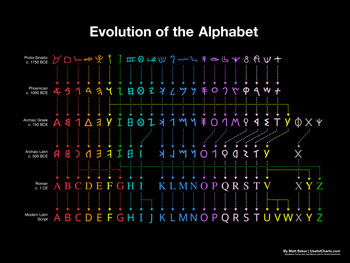Hierogly-PHICS, that is. I know, I know, it’s a reach, but this is cool and it was hard to think of an applicable real word starting with an “f” sound. From My Modern Met.
Colorful Chart Reveals Evolution of English Alphabet From Egyptian Hieroglyphics
By Emma Taggart on January 25, 2019

h/t: [Reddit]All images via Matt Baker / UsefulCharts.




